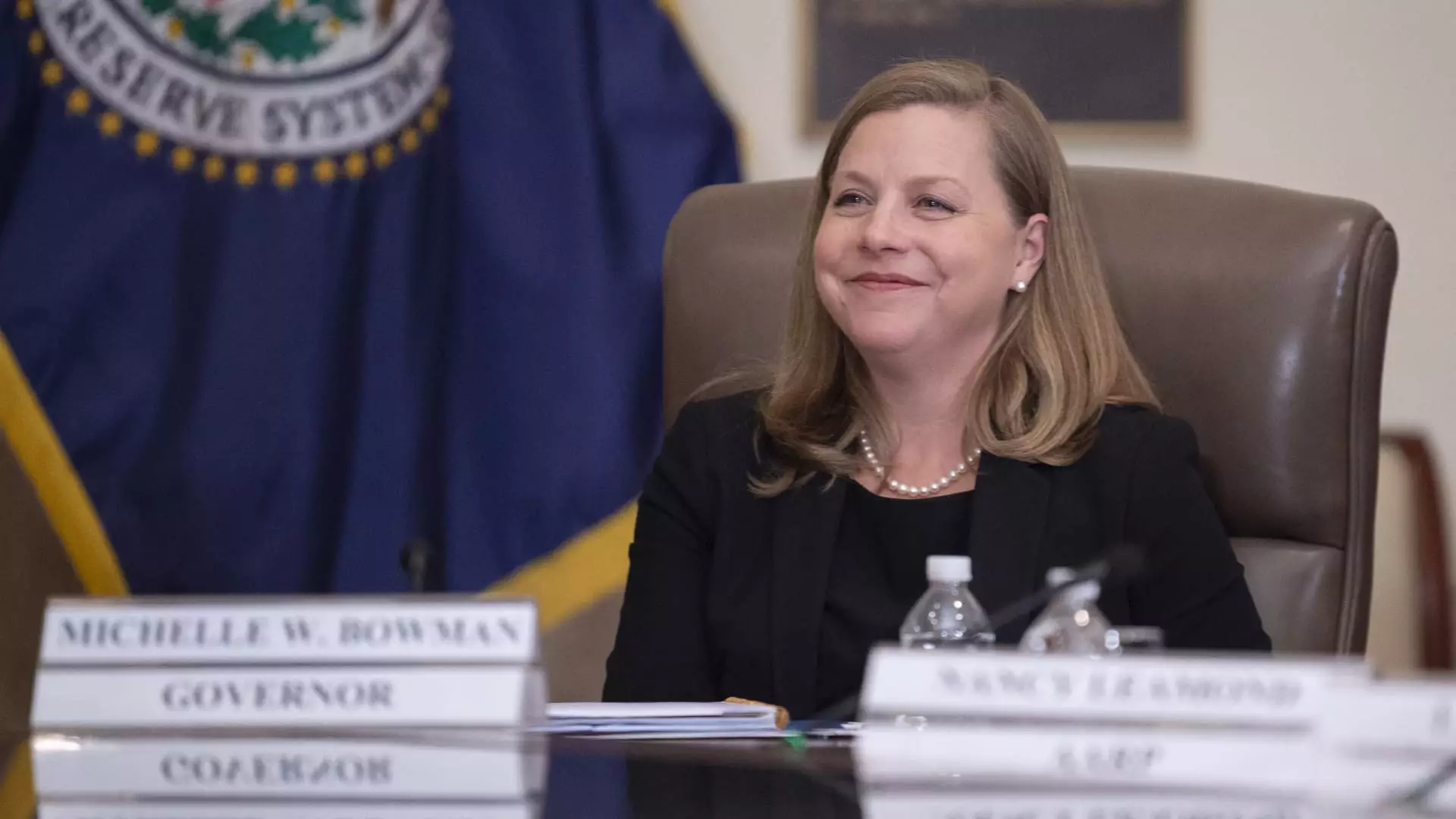Federal Reserve Governor Michelle Bowman’s recent remarks have sparked a debate about the future direction of interest rates in the country. While many of her fellow officials have hinted at possible rate cuts to counter inflation, Bowman has taken a different stance. She has cautioned that increasing interest rates might be necessary to control inflation effectively, especially considering the potential upside risks that could impact the economy. This deviation from the norm has raised concerns among investors and policymakers alike.
Bowman emphasized the importance of policymakers proceeding with caution when it comes to adjusting interest rates. She highlighted the fact that easing policy too quickly could lead to a rebound in inflation, ultimately necessitating further rate hikes in the future. This careful approach to monetary policy reflects Bowman’s strong belief in maintaining stability in the face of economic uncertainties. However, her stance has also raised questions about the potential consequences of delayed rate cuts in case inflation accelerates unexpectedly.
As a member of the Board of Governors and a permanent voting member of the rate-setting Federal Open Market Committee, Bowman’s hawkish position on containing inflation has been evident in her public speeches. She has consistently advocated for a more aggressive approach to managing inflation, which sets her apart from her more dovish colleagues. While Bowman does acknowledge the possibility of rate cuts in the future, she remains skeptical about the timing and necessity of such actions given the current economic conditions.
Bowman’s recent remarks come at a time when the market is already on edge about the future of Fed policy. With conflicting statements from various Fed officials, including Chair Jerome Powell, regarding the number and timing of rate cuts, investors are left uncertain about the central bank’s next move. Futures traders have priced in multiple rate cuts this year, but the actual implementation remains uncertain. This ambiguity has led to increased volatility in the financial markets and raised concerns about the Fed’s ability to navigate a complex economic landscape.
Bowman’s cautious approach to monetary policy is driven by her assessment of the economic outlook and inflation risks. She has identified several factors that could potentially impact inflation, including geopolitical uncertainties, fiscal stimulus, housing prices, and labor market tightness. While recent inflation readings have shown some progress, Bowman remains wary of potential challenges in the coming months. She believes that supply-side improvements may not have a lasting effect on inflation and that core services could face slower growth moving forward. This nuanced analysis of the inflation landscape underscores the complexity of the current economic environment.
Federal Reserve Governor Michelle Bowman’s recent remarks have shed light on the diverging views within the Fed regarding interest rates and inflation. While her cautionary stance reflects a commitment to maintaining stability, it has also raised concerns about the central bank’s ability to respond effectively to economic challenges. As policymakers continue to assess the risks and uncertainties facing the economy, it is evident that striking the right balance between inflation containment and economic growth remains a significant challenge.

Leave a Reply